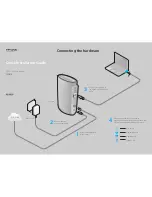
COMMAND RANGING & TELEMETRY UNIT CORTEX
Is.Rev.
Date:
© Safran Data Systems
This document is the property of
Safran Data Systems
.
It cannot be duplicated or distributed without expressed written consent.
Page 14
Note 3
: Binary-coded identity of the transmitted tones (0 = 0 V, 1 = 5 V):
ESA and ESA-like tone standards:
No
tone
Major
Minor
1
Minor
2
Minor
3
Minor
4
Minor
5
Minor
6
J26
0
0
0
0
1
1
1
1
J27
0
0
1
1
0
0
1
1
J28
0
1
0
1
0
1
0
1
USB tone standard:
No
tone
Majo
r
Mino
r 1
Mino
r 2
Mino
r 3
Mino
r 4
Mino
r 5
Mino
r 6
Mino
r 7
Mino
r 8
J26
0
0
0
0
1
1
1
1
0
0
J27
0
0
1
1
0
0
1
1
0
1
J28
0
1
0
1
0
1
0
1
1
0
INMARSAT and LMCO tone standards:
Major Tone
Minor 1
Minor 2
Minor 3
J26
0
0
0
1
J27
0
1
1
0
J28
1
0
1
0
ESA code standard:
Start of sequence ...
... end of sequence
Idle state
Major tone
(set time)
Major tone + code
Major tone
(measurement)
J26
0
0
(1)
(1)
J27
0
0
(1)
(1)
J28
0
0
(1)
(1)
(1): 3-bit counter (J1 = LSB and J2 = MSB; 0 = 0 V, 1 = 5 V). Set to 001B when the RAU starts transmitting the
first code. The counter is then incremented by 1, for each transmitted code and, at the end of the sequence,
when the major tone is transmitted alone for accurate phase measurement. Example: if the code length is set to
18, the number of transmitted codes is 9. The counter will take the following values (in decimal): 0 (major tone
set time), 1, 2, ..., 6, 7, 0, 1 (end of code transmission), 2 (phase measurement on major tone).
















































